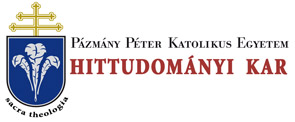Folia Theologica et Canonica 11. 33/25 (2022)
Recensions
254 RECENSIONS of the church buildings (pp. 645-666), and the various types of blessings (pp. 667-686). It is clear from the list that the sacrament of confirmation is the only one of the sacraments which is not specifically mentioned by the Author. For each sacrament, similar to the previous ones, he describes the Eastern and Western traditions, sources and authors. In the fourth chapter are explained the sacred places which were visited by pilgrims from the earliest times, the reasons for pilgrimages, their forms and spiritual effects; then the daily liturgical customs of the monastic tradition and the specific prayerful means of sanctifying the day. In addition, the author reviews the content and structure of a number of formularium (formulation books), lectionarium (reading books), and liturgical books. The volume concludes with a brief outline (pp. 705—706) and a detailed index listing the names of persons and places separately (pp. 707-752). Based on the above, it is clear that Prof. Marcel Metzger has compiled a completely unique volume as a result of decades of research on the sources. Every point and assertion of this work is richly grounded in the tradition of the books of the New Testament, the pseudo-Apostolic collections, and the works of the most important Eastern and Western Early Christian writers. The daily liturgical life of the first five centuries is revived in an interconnected system of liturgical, ecclesiastical and institutional history. The descriptions and conclusions of the contents, which are based on up-to-date research, make this work a unique and indispensable reference work for all those who wish to understand in depth the everyday liturgical life, the feasts and the disciplinary framework of the administration of the sacraments and the sacramentals of the Early Christian Era. Szabolcs Anzelm Szuromi, O.Praem. Álvarez de las Asturias, N. - Sedano, J. (dir.), Derecho canonico en perspectiva historica: fuentes, ciencia e instituciones, EUNSA, Pamplona 2022, pp. 368 Within the history of canon law science, there is a different system of study from the division of the legal history. Canon law history traditionally distinguishes three major disciplines, which encompass the entire body of canon law, or the written and unwritten normative system, its sources, the scholarly literature and the institutional system accumulated throughout the history of the Church, in a systematic and chronological order. These are the history of canonical sources, the history of canonical institutions and the science of canon law, also known as the history of canonical literature. In the canon law faculties, the first two disciplines, namely the history of sources and the histo-
